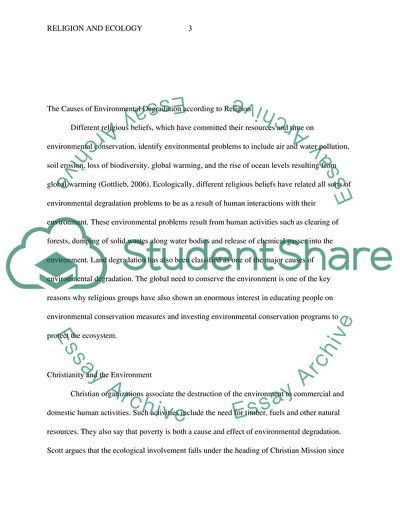Cite this document
(The Causes of Environmental Degradation According to Religion Report Example | Topics and Well Written Essays - 2000 words, n.d.)
The Causes of Environmental Degradation According to Religion Report Example | Topics and Well Written Essays - 2000 words. https://studentshare.org/religion-and-theology/1853023-religion-and-ecology
The Causes of Environmental Degradation According to Religion Report Example | Topics and Well Written Essays - 2000 words. https://studentshare.org/religion-and-theology/1853023-religion-and-ecology
(The Causes of Environmental Degradation According to Religion Report Example | Topics and Well Written Essays - 2000 Words)
The Causes of Environmental Degradation According to Religion Report Example | Topics and Well Written Essays - 2000 Words. https://studentshare.org/religion-and-theology/1853023-religion-and-ecology.
The Causes of Environmental Degradation According to Religion Report Example | Topics and Well Written Essays - 2000 Words. https://studentshare.org/religion-and-theology/1853023-religion-and-ecology.
“The Causes of Environmental Degradation According to Religion Report Example | Topics and Well Written Essays - 2000 Words”. https://studentshare.org/religion-and-theology/1853023-religion-and-ecology.


